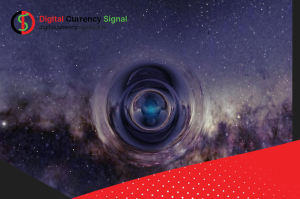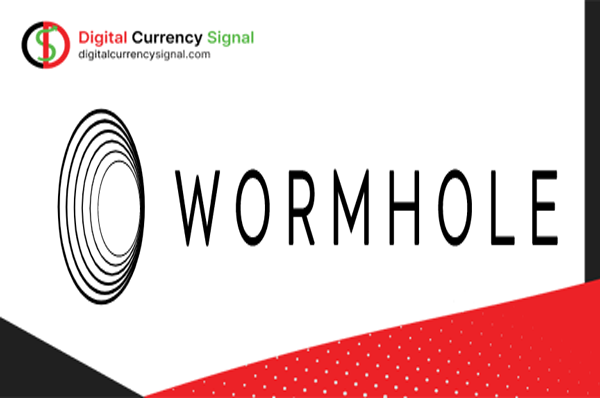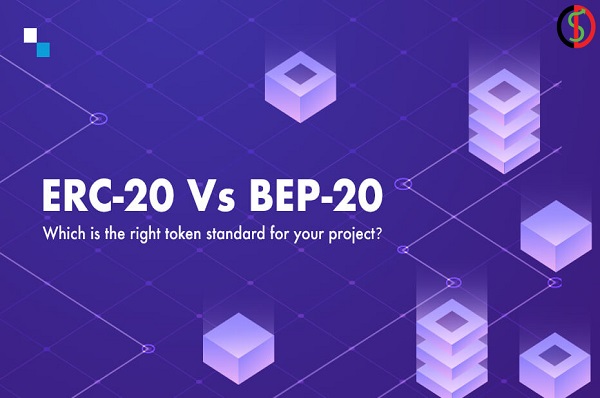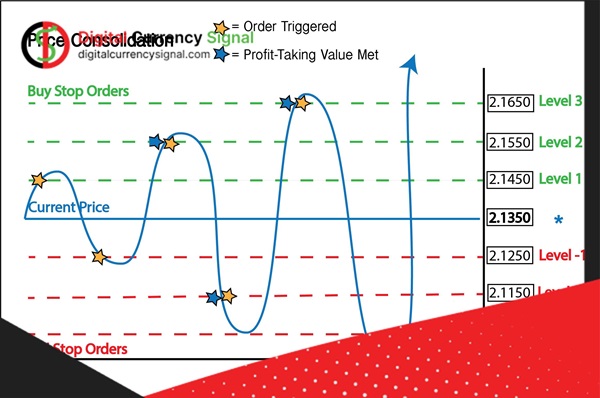Blocks are internal system components, and their inability to communicate with users and applications outside of the native environment creates a major problem for manufacturers, developers, and users. The Wormhole Network is a network communication protocol that allows users to transfer tokens and NFTs between different networks. This protocol is based on Solana and uses a new method called Send Confirmation to ensure security. Wormhole network is one of the latest protocols launched in 2021.
Introduction to Wormhole Networks
A wormhole network solution is now available for various blockchain entities. This toolchain connects high-value blockchains such as Ethereum, Solana, Binance Smart Chain and Polygon. Investors fueled its growth as a result of the growing demand for quick and cheap asset transfers between different crypto ecosystems. A wormhole is a universal, decentralized messaging protocol that connects to multiple blockchains and solves two major problems plaguing blockchains today:
It is difficult to move tokens between blockchains without relying on centralized exchanges to bridge and exchange tokens. However, this means users are exposed to counterparty risk.
Decentralized applications (DApps) and smart contracts on different blockchains cannot communicate with each other, making cross-chain collaboration difficult.
The Wormhole Network, designed as a decentralized, reliable and robust message transfer protocol for connecting multiple blockchains. Simply put, a wormhole is a bridge that effectively facilitates the transfer of digital assets from one blockchain to another blockchain network. Wormhole protocols form a bridge between blockchains, including:
Solana
Ethereum
Binance Smart Network
Polygon
Terra
snow storm
Oasis
Wormhole Network Requirements
It would not be an exaggeration to say that blockchain technology has managed to build a powerful empire around the world. Today, we can find industrial domains that rely on blockchain to increase operational and performance capabilities. While finance is the most popular application of DLT, the technology is currently showing its potential in other areas as well; including education, healthcare, banking, supply chain, etc.
Decentralized ledger technology provides its users with high security, transparency and immutability and has a strong set of advantages. However, DLT has its drawbacks. First, it is difficult to transfer assets between blockchain networks without the intervention of centralized platforms to manage bridging and token exchange. Second, cross-chain interoperability becomes difficult because there is no communication link between DApps and smart contracts on different blockchain channels.
Wormhole Network attempts to solve these problems by providing a secure connection for moving virtual assets to the blockchain. The gateway relies on the core layer of the Wormhole network to accomplish this goal. In fact, it is a contract embedded in each chain that connects the incoming message to the destination chain.
How does a wormhole network work?
Wormhole is designed to be easy to use. To transfer assets between blocks, users simply need to connect their wallets to the Wormhole network bridge and select the assets they wish to transfer. Then the bridge automatically calculates the exchange rate and transfers the assets to the destination blockchain. Wormhole is praised for its speed and reliability. Transfers can be completed in seconds and the protocol has a very low failure rate. Wormhole network is safe as it uses several security measures to protect user assets. Wormholes are a promising new technology that has the potential to change the way users interact with blockchain. We will explain the transfer process below-
Send a message to the wormhole ecosystem.
Guardian nodes carefully check the transaction.
Nodes can reach their destination in seconds.
The storage nodes make the verified message public.
Now the destination chain message is accessible.

Wormhole network security
Developers have implemented countermeasures such as time-blocking protocols and multi-chain communication channels to prevent network attacks through wormholes. Users must be very vigilant about their security, such as using two-factor authentication and other methods. Wormhole transactions are conducted securely, so users take the necessary security measures to protect themselves from attacks. The Wormhole ecosystem allows users to securely and quickly transfer tokens between compatible blockchains without trust. This is done by using sentinel nodes to thoroughly verify transactions and reach a confirmation quorum within seconds.
Once authenticated, the message becomes available to everyone in the destination chain, allowing users to easily access it from there. Thus, the Wormhole ecosystem facilitates the fast and secure delivery of messages across various blockchain networks. Token transfers are ensured by the aforementioned custodians, a hand-picked set of validating nodes that oversee the chains. Some of the world’s largest equity providers serve as custodians; Like Everstake and Certus One, the world’s largest staking service provider.
After a transfer is requested, custodians confirm it and then lock the platform’s native tokens into a smart contract. The equivalent number of tokens is multiplied as a compound asset in the destination chain. Each transaction is subject to a transient transaction fee and normal gas fees that must be paid to the sending and receiving chains. While chains like BSC, Solana, Polygon, and Avalanche have very low gas costs, Ethereum can cost $50 or more. The current version of the Wormhole Token Bridge is the V2 bridge, which is built on top of, but not part of, the core layer of the wormhole. It also has a TVL of over $1 billion and supports a number of NFTs.
Why do we need a bridge?
A bridge protocol is a second-layer program that creates a virtual bridge between two blockchain networks and allows them to communicate. Communication means any transfer of information, including the transfer of property. Today, the market is like a huge neural network full of great ideas and concepts. Users flock to AVAX because of its low affiliate fees and high APY. They buy NFTs in Solana because of the stable mining environment and easy transfers and invest in Ethereum; Where there are dozens of high-volume altcoin opportunities, but this neural network lacks a bridge to connect these disparate places.
With the launch of an attractive farming protocol on AVAX, there is no faster, cheaper and easier way for Ethereum investors to move and recycle their capital. Importantly there is no decentralized way to do this. Most users migrate their Ether from a permissionless wallet like Metamask to a centralized exchange where they exchange ETH for another token and then withdraw to a wallet on another network. This is a long process and when you consider all the 2FA and codes required to perform these withdrawals, you realize that it is a time consuming and tedious process. Protocols like wormhole network are here to save us and they are all decentralized.
What makes Wormhole Network unique?
Support for multiple blockchains
Wormhole is committed to improving its operations by enabling its ecosystem to support a wide range of blockchain channels. Unified access to multiple decentralized systems helps users gain access to multiple DeFi protocols without a centralized exchange. For example, traders can move their ERC20 assets from Ethereum to other networks to quickly access DeFi solutions on them. This allows investors from other blockchains to take advantage of Ethereum’s growing DeFi ecosystem. The wormhole is a good reason for those who find themselves in a difficult situation after seeing the high cost of Ethereum gas.
Chain bridging for NFTs
Fungible tokens have emerged as the hottest trend in the financial space. In the third quarter of 2021, we saw a huge increase in popularity and interest in NFTs, especially among small investors and global figures. The Wormhole Network allows traders to seamlessly transfer their NFT holdings between multiple blockchain networks. This feature of Wormhole sets it apart from other cryptographic bridges that do not support hashing NFTs.
Easy development of DApps
The robust infrastructure of the Wormhole platform supports DApps built on it. Developers can take the initiative to design the first protocol and use the best features of individual blockchains. For example, Solana can be used to confirm transactions to enjoy low transaction fees and still choose Ethereum as the final settlement layer to seek high security in the ecosystem. In addition, Wormhole helps developers easily use Layer1 solutions as Layer2 solutions. This portal helps developers to design multi-chain DEX, digital wallets or multi-chain DAO.
Advantages of Wormhole Networks
Speed: Wormhole transfers are processed quickly and efficiently, with confirmation times of just seconds.
Reliability: The wormhole has a very low failure rate; This means that users can be sure that their transfer will be completed successfully.
Security: Wormhole uses a number of security measures to protect user assets, including proof of transfer and multi-signature wallets.
Interoperability: Wormhole allows users to transfer tokens and NFTs between different blockchains, which can help break down barriers between different ecosystems.
Wormholes are used to bridge the gap between assets, develop decentralized applications (DApps), and offer users low transaction fees, cross-chain transactions, and low latency to access DeFi solutions. It creates a globally accessible system that is accessible to everyone who loves blockchain technology and invests in digital currencies. If you are looking for a safe and secure way to transfer tokens and NFTs between different blockchains, Wormhole Network is a great choice. The protocol is fast, reliable, secure, and supports multiple blockchains and assets.
wormhole net negative points
Hacking: Wormhole is a complex process and there is always a risk of hacking.
Volatility: The price of the Wormhole token (Whale) is volatile and may lose value if the protocol fails.
Competition: There are other intranet communication techniques, and a wormhole may face competition from these techniques.
Overall, Wormhole Network is a promising new technology that has the potential to revolutionize the way users interact with the blockchain. However, there are risks associated with the protocol and investors should do their research before investing in WHALE tokens.

The $320 million hack of the Wormhole network
A wormhole attack is when an attacker uses the wormhole protocol to send funds from one chain to another and then reverse the transaction to spend their funds. The $320 million wormhole hack that took place in 2022 was one of the largest DeFi hacks in history, leading to the theft of 120,000 Ether. Despite rewarding the Wormhole team with $10 million via an Ethereum address, the hackers have yet to return the stolen funds or reveal themselves.
final word
Wormhole Network is a revolutionary solution that solves problems around the world of cryptography. For investors who want to prosper, Wormhole offers a user-friendly interface, powerful tools and services to bridge the gap between assets, develop distributed applications (DApps) and access DeFi solutions. This platform not only makes the potential of the crypto industry accessible to everyone, but also helps to transfer investments more easily. Wormhole provides an opportunity with an efficient and comprehensive system available to all those who are passionate about blockchain technology and invest in digital currencies. With Wormhole, investors can benefit from increased security, increased liquidity and access to new markets while enjoying its many features, such as low transaction fees, on-chain transactions and low latency. This makes Wormhole Network a great tool for those looking to maximize their cryptocurrency profits.
Useful Articles
Decentralized derivatives in DeFi



